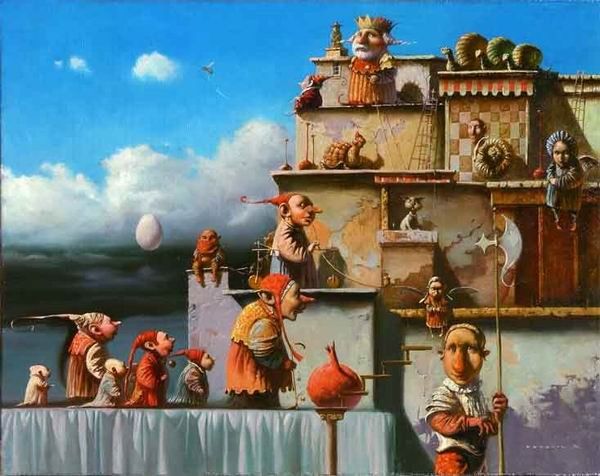
PRINCIPIA LUDI SCACCHORUM, Part 2: Chess Basics You Never Thought of
Standing on the borderline between game, art, science and sport, chess is not only one of the greatest intellectual delights, but also a perfect paradigm for teaching and learning certain mental skills citizens of the 21-st century need to become successful, independent and productive in an increasingly complex and fast changing world. Unfortunately, the traditional teaching method has been keeping millions out of the game to reap these benefits. To replace an outdated and ineffective early education in chess we need a modern revolutionary breakthrough. For this to happen it is therefore absolutely necessary to revisit the true chess basics, Principia Scacchorum, in order to be able to design a strong and effective early chess learning system for effective participation in the best game ever invented by humans so far...
In the previous post we put our mind to unlocking the chess fundamentals mystery.
Chess is hard to learn. So our goal is to reclaim the basics of the game, in order to be able to design a new, modern, 21-st century system of early learning, which may bring the game to many more millions of people. Chess to the masses!
So let us get straight to the point and make a definition what the true basics are, and what they are not.
The basics of chess is mindset.
The basics of math is mindset.
The basics of good photography is mindset.
The basics of everything is mindset.
Mindset is a settled way of thinking, collection of beliefs and assumptions that make up the mental attitide, or habit, that predetrmines a person's interpretations of and responses to situations. It influences our decisions. The established frame of mind continues to adopt and accept prior behaviors, or choices as something true or real. It is an opinion we are unable or unwilling to change.
Now we just have to find out what chess ideas and concepts should fill in the void to become principal part of the young and developing chess mindset. Without properly established and firmly ingrained chess basics, it is impossible to grow a successful mature chess brain.
On the other hand, mere technicalities, like how pieces move across the board, is absolutely secondary to mindset.
For example, it is not how you hit the tennis ball (=technicality), it is much more important where you want to send it (=mindset).
It is not how you press the camera's shutter button (=technicality), what really matters is discovering realtionships between objects that you see through the camera's viewfinder (=mindset), and then the ability to anticipate a finished image (previsualisation, =mindset).
Chess players, doesn't all this sound somehow familiar?
"Visualisation is the single most important factor in photography," put it the legendary American photographer Ansel Adams, which tells the chess comunity that we are not alone in relying on good visual-spatial skills to be successful.
Likewise, in chess, it is not how rook makes movements on an empty board (this is exactly how we get initiated in chess, =technicality), what is important is an effort to see how the rook and other pieces on the board are connected (=mindset), and then based on that input, what you need to do, or where you want to go from there (purpose, =part of mindset again).
The absence of this kind of mindset is the essence of the problem with the traditional early teaching and learning. The two most important elements of an effective chess mindset, (1) the structure of pieces and thier relationships, and (2) purpose, are entirely out of the picture. This is how poor chess board vision, and we know the chess vision is the foundation of all chess, sets in early with its devastating effects on the young chess brain.
Next time, on the origins of wood pushing in chess.
